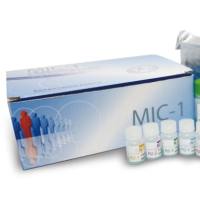Histopathological Diagnosis of Muscular Dystrophies
互联网
387
Muscle biopsies from patients with a muscular dystrophy (MD) often arrive at the histopathology laboratory accompanied by information indicating a definite and accurate clinical diagnosis, but, just as frequently, they do not. It is therefore inadvisable to omit conventional histological and histochemical (HC) examination in favor of proceeding directly to protein analysis via immunocytochemistry (ICC) and immunoblotting. Preliminary histopathological screening provides useful information in three major areas (1 ,2 ). First, the application of comprehensive histological and HC protocols ensures that a wide range of analytical techniques is applied to individual biopsies, and this is the most reliable way of excluding disorders such as congenital myopathies, metabolic myopathies, or atypical spinal muscular atrophies from the differential diagnosis. Second, it provides information on current severity, which may have implications for prognosis, and on the presence or absence of complicating factors, such as secondary inflammatory components, which may respond to treatment. Third, it gives useful correlative data for subsequent immunolabeling studies, e.g., information on the degree of replacement of muscle by fat and fibrous connective tissue, which may prompt the adjustment of gel loading for immunoblotting, or the identification of regenerating fibers, whose presence may influence levels of protein expression in ICC analysis.









